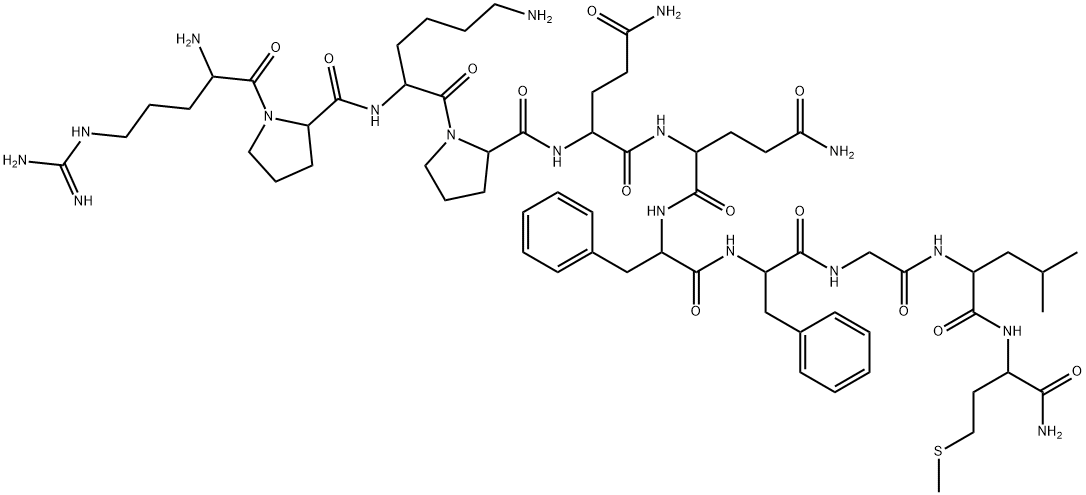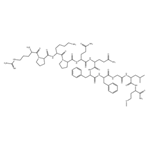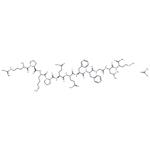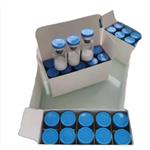Uses
Substance P is a neurokinin undecapeptide neurotransmitter and neuromodulator.
Definition
ChEBI: Substance P is a neuropeptide consisting of 11-amino acids. It preferentially activates neurokinin-1 receptors, exterting excitatory effects on central and peripheral neurons and involved in pain transmission. It has a role as a neurotransmitter, a vasodilator agent and a neurokinin-1 receptor agonist. It is a conjugate base of a substance P(3+).
General Description
Substance P is a polypeptide consisting of 11 amino acidresidues. It has been implicated in the transmission of“painful” sensory information through the spinal cord tohigher centers in the central nervous system. Substance Pis localized in the primary afferent sensory fibers. Other pharmacologicaleffects are vasodilatation, stimulation of smoothmuscles, stimulation of salivary secretion, and diuresis. In addition,this neuropeptide contributes to some inflammatory responses.Approximately 50% of the known neuropeptides aresynthesized as biologically inactive glycine extended precursorsthat require a carboxy-terminal posttranslational amidationfor biological activity. Amidation enzymes are responsiblefor the conversion of the carboxyl group of the neuropeptide tothe corresponding amide group and include the two amidatingenzymes peptidylglycine α-monooxygenase (PAM) and peptidylamidoglycolatelyase (PGL), which work sequentially toproduce the inflammatory neuropeptide Substance P from aninactive precursor peptide. Much research is being performedto exploit this mechanism of inflammation.
Biological Activity
Cell permeable: no', 'Primary Target
Substance P receptors', 'Product does not compete with ATP.', 'Reversible: no




